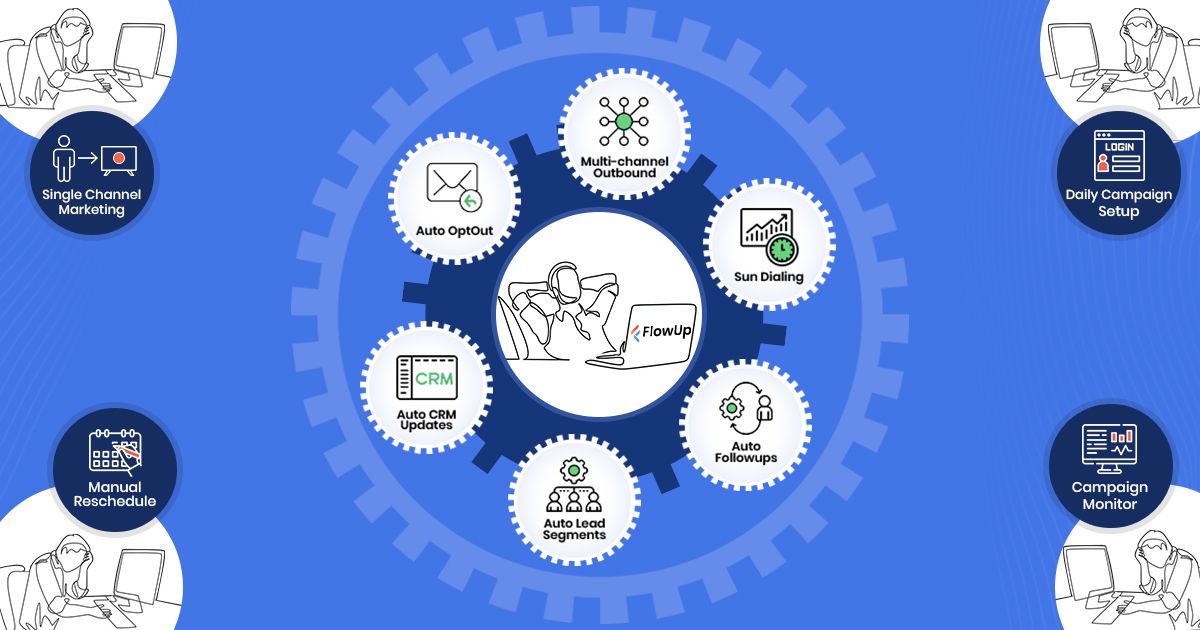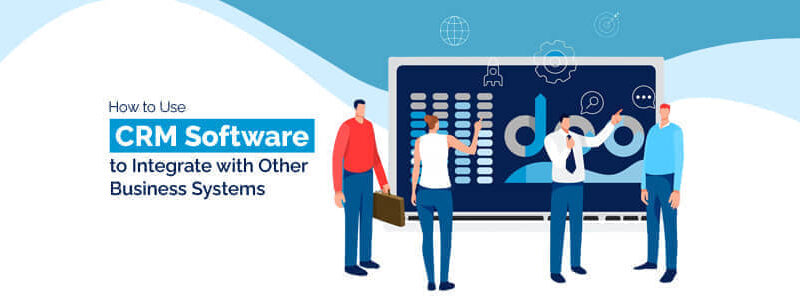In today’s fast-paced business environment, staying top of mind with potential clients is critical to closing more deals. Automated follow-ups offer a powerful solution, allowing businesses to maintain consistent communication without the time-consuming manual effort.
By leveraging technology, sales teams can send timely and personalized messages, ensuring that no lead is left behind. This not only streamlines the sales process but also enhances the customer experience, leading to higher conversion rates and increased customer satisfaction.
Discover how automated follow-ups can transform your sales strategy and drive more successful outcomes.
Close More Deals with Automated Follow-Ups
In today’s fast-paced business environment, automated follow-ups have become a crucial tool for sales teams to enhance their productivity and close more deals. By automating the follow-up process, businesses can ensure that leads are nurtured consistently and effectively, increasing the likelihood of converting prospects into customers.
Automated follow-ups not only save time but also help in maintaining a strong, consistent communication channel with potential clients, thereby building trust and enhancing the overall customer experience.
Why Are Automated Follow-Ups Essential for Sales?
Automated follow-ups are essential for sales because they allow sales teams to stay in constant touch with leads without the need for manual intervention. This continuous engagement helps in keeping your brand top-of-mind for potential customers, which is crucial in a competitive market.
Moreover, automated follow-ups can be tailored to different stages of the sales funnel, ensuring that the right message is delivered at the right time, thus maximizing the chances of conversion.
How to Implement Automated Follow-Ups Effectively
To implement automated follow-ups effectively, it is important to choose the right tools and strategies. CRM (Customer Relationship Management) systems and marketing automation platforms can be invaluable in this process.
These tools allow you to set up automated email sequences, follow-up calls, and other forms of communication that can be triggered based on specific actions or events. Additionally, personalizing the content of your follow-ups to match the interests and needs of your leads can significantly improve the effectiveness of your automated campaigns.
Measuring the Success of Your Automated Follow-Up Campaigns
Measuring the success of your automated follow-up campaigns is crucial for continuous improvement. Key metrics to track include open rates, click-through rates, and conversion rates.
Analyzing these metrics can provide insights into the effectiveness of your follow-up strategy and help you identify areas for optimization. For example, if you notice that certain subject lines or content types perform better, you can adjust your campaigns accordingly to maximize results.
| Metric | Definition | Importance |
|---|---|---|
| Open Rates | The percentage of recipients who open your follow-up emails. | Indicates the level of interest in your initial outreach. |
| Click-Through Rates (CTR) | The percentage of recipients who click on links within your follow-up emails. | Measures the engagement level of your leads with your content. |
| Conversion Rates | The percentage of leads who take the desired action, such as making a purchase or filling out a form. | The ultimate measure of the success of your follow-up campaigns. |
How many follow-ups does it take to close a deal?
Determining the exact number of follow-ups it takes to close a deal can vary widely depending on several factors such as the industry, the complexity of the deal, and the relationship between the parties involved.
Generally, it is understood that one or two follow-ups may not be sufficient, and it often takes multiple attempts to secure a deal. Some studies suggest that it can take an average of 6 to 8 follow-ups to close a deal, but this number can be higher or lower based on the specific circumstances.
The key is to maintain persistence and consistency while being respectful of the client’s time and needs.
Factors Influencing the Number of Follow-Ups
The number of follow-ups required to close a deal can be influenced by several factors:
- Industry Standards: Different industries have different norms for follow-up practices. For example, the technology sector might have a faster pace, requiring fewer follow-ups, while the real estate sector might involve more detailed negotiations and thus more follow-ups.
- Client Relationship: Existing relationships can significantly impact the number of follow-ups needed. A long-standing client might require fewer follow-ups compared to a new prospect who needs more time to build trust and confidence.
- Complexity of the Deal: The complexity of the deal plays a crucial role. Simple transactions might be closed with fewer follow-ups, whereas complex deals involving multiple stakeholders and extensive negotiations can take many more follow-ups to finalize.
Strategies for Effective Follow-Ups
To maximize the effectiveness of your follow-ups, consider the following strategies:
- Personalize Each Follow-Up: Tailor your messages to the specific needs and interests of the client. Personalization can help maintain engagement and show that you are committed to understanding their requirements.
- Provide Value in Each Interaction: Each follow-up should offer something of value, whether it’s new information, a solution to a problem, or a thought-provoking insight. This can keep the client engaged and move the deal forward.
- Be Persistent and Respectful: Persistence is key, but it’s equally important to be respectful of the client’s time and preferences. Overwhelming them with too many follow-ups can be counterproductive.
Measuring the Success of Follow-Ups
To gauge the success of your follow-up efforts, consider the following metrics:
- Response Rate: Track how many of your follow-up messages receive a response. A high response rate indicates that your follow-ups are engaging and relevant.
- Conversion Rate: Measure the percentage of follow-ups that lead to a successful close. This can help you identify which follow-up strategies are most effective.
- Feedback from Clients: Solicit feedback from clients to understand what aspects of your follow-ups are most helpful and what can be improved. This can provide valuable insights for refining your approach.
What is automated followup?

Automated followup refers to the use of technology to streamline and manage the process of following up with customers, leads, or prospects in a business context. This typically involves software solutions that automate the sending of emails, messages, or notifications at predetermined intervals to maintain engagement and drive conversions.
Automated followup systems can be integrated into various parts of a business, such as sales, marketing, and customer service, to ensure that no potential customer is overlooked and that communication is consistent and timely.
Benefits of Automated Followup
Automated followup offers several advantages for businesses:
- Increased Efficiency: Automating the followup process reduces the manual labor required to keep in touch with leads and customers, allowing sales and marketing teams to focus on more strategic tasks.
- Improved Customer Engagement: Consistent and timely communication helps maintain customer interest and engagement, increasing the likelihood of conversion and repeat business.
- Scalability: Automated systems can handle a large volume of followups, making it easier for businesses to scale their operations without a proportional increase in resources.
Types of Automated Followup
There are different types of automated followup methods that businesses can employ:
- Email Campaigns: Automated email campaigns can be set up to send a series of emails to leads and customers at specific intervals, providing valuable content, updates, and offers.
- Text Message (SMS) Followups: Automated text messages can be used to send reminders, confirmations, and personalized offers to customers, ensuring quick and direct communication.
- Social Media Engagement: Automated tools can be used to monitor and respond to customer interactions on social media platforms, enhancing brand presence and customer satisfaction.
Implementing Automated Followup
To effectively implement automated followup, businesses need to consider several key steps:
- Define Goals: Clearly define the objectives of the automated followup, such as increasing lead conversion, improving customer retention, or enhancing brand awareness.
- Choose the Right Tools: Select automated followup tools that integrate well with existing CRM systems and other business software to ensure seamless operation.
- Personalize Communications: Customize automated messages to make them feel more personal and relevant to the recipient, increasing the chances of a positive response.
What is closing sales and follow up?
Closing sales and follow-up are critical components of the sales process that ensure customer satisfaction and drive long-term business growth. Closing sales refers to the final stage in a sales cycle where the salesperson secures a commitment from the prospect to purchase a product or service.
This involves addressing any last-minute concerns, negotiating terms, and finalizing the deal. Follow-up, on the other hand, involves maintaining contact with the customer after the sale to ensure their satisfaction, address any issues, and build a lasting relationship. Effective follow-up can lead to repeat business and positive word-of-mouth referrals.
Understanding the Closing Process
The closing process is the culmination of all the efforts put into the sales cycle. It involves several key steps:
- Identifying Objections: Before attempting to close the sale, it’s crucial to identify and address any objections the prospect may have. Common objections include price, features, and timing. By understanding and addressing these concerns, the salesperson can build trust and confidence in the product or service.
- Presenting the Value Proposition: Highlighting the unique benefits and value that the product or service can bring to the customer is essential. This could involve cost savings, increased efficiency, or improved quality. A well-articulated value proposition can tip the scales in favor of the sale.
- Asking for the Commitment: Once the objections are addressed and the value is clear, the salesperson should confidently ask for the commitment. This can be done through direct questions or by summarizing the benefits and asking for a decision. The key is to make the ask in a way that feels natural and non-pressuring.
Importance of Effective Follow-Up
Follow-up is an often-overlooked but crucial part of the sales process. It helps to solidify the relationship with the customer and can lead to repeat business and referrals. Here’s why follow-up is important:
- Ensuring Satisfaction: After the sale, it’s essential to check in with the customer to ensure they are satisfied with their purchase. This could involve a phone call, email, or in-person visit. Showing that you care about their experience can build trust and loyalty.
- Addressing Issues: No product or service is perfect, and issues can arise. By proactively following up, you can identify and resolve any problems before they escalate. This demonstrates a commitment to customer service and can turn a potentially negative experience into a positive one.
- Promoting Repeat Business: Regular follow-up can help you stay top-of-mind for future purchases. By maintaining a strong relationship, you increase the likelihood that the customer will return to you for additional products or services. It also provides opportunities to upsell or cross-sell.
Techniques for Successful Follow-Up
Effective follow-up techniques can significantly enhance customer satisfaction and drive business growth. Here are some strategies to consider:
- Personalized Communication: Tailor your follow-up communication to the individual customer. Personal touches, such as addressing them by name and referencing specific details from your previous interactions, can make the customer feel valued and important.
- Timeliness: Timely follow-up is crucial. Reach out to the customer shortly after the sale to thank them for their purchase and to offer assistance if needed. This shows that you are responsive and customer-focused.
- Consistency: Consistent follow-up over time can help build a strong, lasting relationship. Regular check-ins, even when there is no immediate need for a sale, can keep you connected to the customer and increase the chances of repeat business.
Frequently Asked Questions
What are Automated Follow-Ups and How Do They Work?
Automated follow-ups are pre-scheduled messages sent to leads or customers to maintain communication and nurture relationships. They work by using software to automatically send out emails, texts, or other messages at specific intervals, ensuring consistent engagement without manual effort. This helps keep your brand top-of-mind and can significantly increase the likelihood of closing deals.
How Can Automated Follow-Ups Improve Sales Effectiveness?
Automated follow-ups improve sales effectiveness by ensuring timely and consistent communication with leads. They help sales teams stay organized and focused on high-priority tasks while maintaining regular contact with potential customers. By providing valuable content and timely reminders, automated follow-ups can move leads through the sales funnel more efficiently, ultimately leading to more closed deals.
What Kinds of Content Are Best for Automated Follow-Ups?
The best content for automated follow-ups includes personalized emails, informative articles, case studies, and product demonstrations. These should be relevant to the lead’s interests and stage in the buying journey. Providing value through educational content and addressing common questions can build trust and keep prospects engaged. Tailored content that addresses specific pain points is particularly effective in moving leads closer to a purchase decision.
How Can I Measure the Success of My Automated Follow-Up Campaigns?
To measure the success of your automated follow-up campaigns, track key metrics such as open rates, click-through rates, conversion rates, and the number of new leads generated. Use analytics tools to monitor these metrics and identify trends. Regularly review the data to refine your messaging and timing, ensuring that your follow-ups are effective in nurturing leads and driving conversions.


